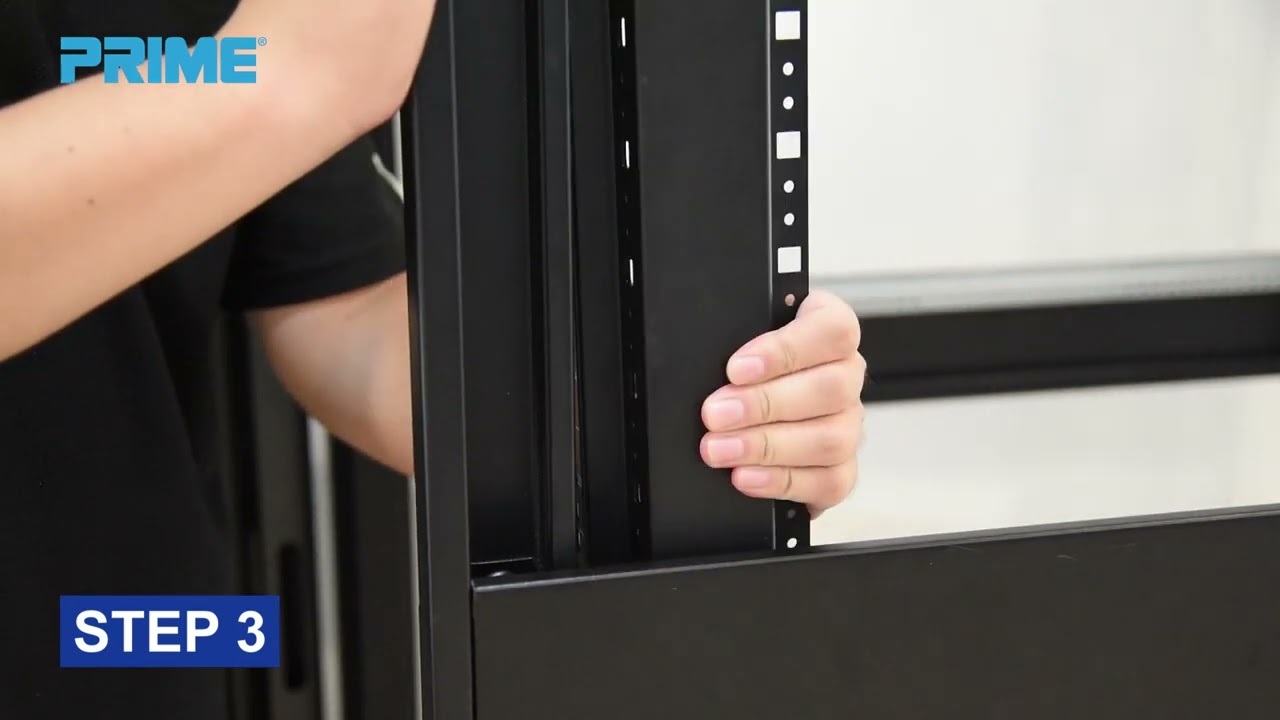Humans have automated tasks for centuries. Now, AI companies see a path to profit in harnessing our love of efficiency, and they’ve got a name for their solution: agents.
Technology
BaCta is using engineered bacteria to grow natural rubber and slash CO2 emissions

The synthetic biology and precision fermentation space is a hotbed of entrepreneurial activity these days. But it’s not every day you come across a startup that’s using genetic engineering to produce natural rubber — a substance that’s challenging to reproduce in a lab because of how long its polymer is.
Paris-based baCta has a proof of concept up and running that uses engineered bacteria (E.coli) to yield natural rubber in vitro. The startup says its method, which relies upon a renewable feedstock — currently it’s using glucose but is aiming to diversify into acetate and carbon — is carbon neutral.
The startup has just bagged €3.3 million (around $3.6 million at current exchange rates) so it can get to work on its next challenge: figuring out how to industrialize its lab-based process and move from producing milligrams of raw material so far into the far greater quantities necessary for other companies to use its rubber to make their own products.
Natural rubber not grown on trees
Around half the world’s rubber is synthetic (i.e. derived from petroleum); the other half (natural rubber) is harvested from the latex-laden sap of Hevea trees. Neither route is great from a sustainability point of view. Though natural rubber might sound more environmentally friendly, it can lead to deforestation if land is cleared to make way for Hevea plantations.
At the same time, with the advent of emissions reporting regulations and the like, manufacturers in Europe and elsewhere are under pressure to find ways to reduce their carbon footprints. So if a raw material’s supply can be greener, and the product is competitively priced, there should be a clear incentive to switch to a bio-engineered version of natural rubber.
BaCta CEO and founder Mathieu Nohet sounds confident that the startup, which was only founded in January 2024, will be able to scale up production of its biosynthesized natural rubber.
He also thinks the approach it’s taken — which involves “synthetic AI enzyme technology that basically lifts scientific barriers and enables polymerization of rubber inside bacteria,” as he explains it — will allow it to hit a price-point that’s competitive versus the conventional commodity, while offering major reductions in CO2 emissions.
“Having this polymerization mechanism inside the cell enables us to be much more efficient in terms of yield and, ultimately, in terms of cost per kilogram, which means that if we’re able to pull off the mixotrophic approach [i.e. feedstock diversification], we’ll actually be competitive with the commodity at the price that is today.”
“We’re testing acetate [as a feedstock] and also trying to fix carbon directly inside the cell to increase yield, decrease cost and carbon impact. [Natural rubber] has a huge carbon impact, so we could actually remove hundreds of millions of tons of CO2 from the atmosphere if we [are] successful.”
Initially, baCta’s go-to-market strategy entails targeting the material at luxury fashion/apparel brands — so for use-cases like premium shoes, bags, etc. — which don’t need large quantities of raw material. It would then seek to expand out to more industrial-style use cases (rubber parts for vibration damping in machinery, for example) once it’s stepped up production.
“The goal is to scale it up,” he says. “First try it in a fermenter, get it out of the lab, basically, and then to a pilot scale. So, let’s say, 100 to 200 liters cultures, so that we can start delivering bigger batches to our potential customers.”
The startup is hoping to reach pilot scale in 18 months, per Nohet. “Then we would raise another round to reach pre-industrial scale,” he says.
BaCta’s pre-seed round is led by OVNI Capital, with participation from another.vc, Kima Ventures, Sharpstone Capital, and “prominent” business angels, including Thibaud Elziere and members of the Hexa team, as well as Nicolas Morin, co-founder of Gourmey.
Since the startup’s natural rubber is produced through genetic engineering, Nohet confirms they are able to remove specific proteins in the tree sap that can trigger allergies. This means the biosynthesized natural rubber could have an added benefit in that it could be marketed as hypoallergenic.
Down the line, the startup has plans to move beyond rubber production, too: It wants to apply the approach to deliver carbon neutral production of isoprenoids — a family of chemical compounds derived from a monomer of the rubber polymer — that have many uses in areas like industrial and pharmaceutical production.
But the company is sticking with natural rubber for starters.
“Rubber has this advantage where many, many people use it for different usage,” he notes. “So we can actually have a sequential go-to-market, where we start with a very high-end customers, and then move towards more mass market. Plus it’s a very, common, famous, understandable product. So we think it’s easier to get people behind the mission with a first product that everybody knows.”
Servers computers
MDC Assembly Guide 42U Server Cabinet – SRRCS62107

MDC Assembly Guide 42U Server Cabinet – SRRCS62107. Short guide, easy assembly. Call for more info. .
source
Technology
Agents are the future AI companies promise — and desperately need

AI agents are autonomous programs that perform tasks, make decisions, and interact with environments with little human input, and they’re the focus of every major company working on AI today. Microsoft has “Copilots” designed to help businesses automate things like customer service and administrative tasks. Google Cloud CEO Thomas Kurian recently outlined a pitch for six different AI productivity agents, and Google DeepMind just poached OpenAI’s co-lead on its AI video product, Sora, to work on developing a simulation for training AI agents. Anthropic released a feature for its AI chatbot, Claude, that will let anyone create their own “AI assistant.” OpenAI includes agents as level 2 in its 5-level approach to reach AGI, or human-level artificial intelligence.
Obviously, computing is full of autonomous systems. Many people have visited a website with a pop-up customer service bot, used an automated voice assistant feature like Alexa Skills, or written a humble IFTTT script. But AI companies argue “agents” — you’d better not call them bots — are different. Instead of following a simple, rote set of instructions, they believe agents will be able to interact with environments, learn from feedback, and make decisions without constant human input. They could dynamically manage tasks like making purchases, booking travel, or scheduling meetings, adapting to unforeseen circumstances and interacting with systems that could include humans and other AI tools.
Artificial intelligence companies hope that agents will provide a way to monetize powerful, expensive AI models. Venture capital is pouring into AI agent startups that promise to revolutionize how we interact with technology. Businesses envision a leap in efficiency, with agents handling everything from customer service to data analysis. For individuals, AI companies are pitching a new era of productivity where routine tasks are automated, freeing up time for creative and strategic work. The endgame for true believers is to create AI that is a true partner, not just a tool.
“What you really want,” OpenAI CEO Sam Altman told MIT Technology Review earlier this year, “is just this thing that is off helping you.” Altman described the killer app for AI as a “super-competent colleague that knows absolutely everything about my whole life, every email, every conversation I’ve ever had, but doesn’t feel like an extension.” It can tackle simple tasks instantly, Altman added, and for more complex ones, it will attempt them but return with questions if needed. Tech companies have been trying to automate the personal assistant since at least the 1970s, and now, they promise they’re finally getting close.
At an OpenAI press event ahead of the company’s annual Dev Day, head of developer experience Romain Huet demonstrated the company’s new Realtime API with an assistant agent. Huet gave the agent a budget and some constraints for buying 400 chocolate-covered strawberries and asked it to place an order via a phone call to a fictitious shop.
The service is similar to a Google reservation-making bot called Duplex from 2018. But that bot could only handle the simplest scenarios — it turned out a quarter of its calls were actually made by humans.
While that order was placed in English, Huet told me he gave a more complex demo in Tokyo: he prompted an agent to book a hotel room for him in Japanese where it would handle the conversation in Japanese and then call him back in English to confirm it’s done. “Of course, I wouldn’t understand the Japanese part — it just handles it,” Huet said.
But Huet’s demo immediately sparked concerns in the room full of journalists. Couldn’t the AI assistant be used for spam calls? Why didn’t it identify itself as an AI system? (Huet updated the demo for the official Dev Day, an attendee says, making the agent identify itself as “Romain’s AI Assistant.”) The unease was palpable, and it wasn’t surprising — even without agents, AI tools are already being used for deception.
There was another, arguably more immediate problem: the demo didn’t work. The agent lacked enough information and incorrectly recorded dessert flavors, causing it to auto-populate flavors like vanilla and strawberry in a column, rather than saying it didn’t have that information. Agents frequently run into issues with multi-step workflows or unexpected scenarios. And they burn more energy than a conventional bot or voice assistant. Their need for significant computational power, especially when reasoning or interacting with multiple systems, makes them costly to run at scale.
AI agents offer a leap in potential, but for everyday tasks, they aren’t yet significantly better than bots, assistants, or scripts. OpenAI and other labs aim to enhance their reasoning through reinforcement learning, all while hoping Moore’s Law continues to deliver cheaper, more powerful computing.
So, if AI agents aren’t yet very useful, why is the idea so popular? In short: market pressures. These companies are sitting on powerful but expensive technology and are desperate to find practical use cases that they can also charge users for. The gap between promise and reality also creates a compelling hype cycle that fuels funding, and it just so happens that OpenAI raised $6.6 billion right as it started hyping agents.
AI agent startups have secured $8.2 billion in investor funding over the last 12 months
Big tech companies have been rushing to integrate all kinds of “AI” into their products, but they hope AI assistants in particular could be the key to unlocking revenue. Huet’s AI calling demo outpaces what models can currently do at scale, but he told me he expects features like it to appear more commonly as soon as next year, as OpenAI refines its “reasoning” o1 model.
For now, the concept seems to be mostly siloed in enterprise software stacks, not products for consumers. Salesforce, which provides customer relationship management (CRM) software, spun up an “agent” feature to great fanfare a few weeks ahead of its annual Dreamforce conference. The feature lets customers use natural language to essentially build a customer service chatbot in a few minutes through Slack, instead of spending a lot of time coding one. The chatbots have access to a company’s CRM data and can process natural language easier than a bot not based on large language models, potentially making them better at limited tasks like asking questions about orders and returns.
AI agent startups (still an admittedly nebulous term) are already becoming quite a buzzy investment. They’ve secured $8.2 billion in investor funding over the last 12 months, spread over 156 deals, an increase of 81.4 percent year over year, according to PitchBook data. One of the better-known projects is Sierra, a customer service agent similar to Salesforce’s latest project and launched by former Salesforce co-CEO Bret Taylor. There’s also Harvey, which offers AI agents for lawyers, and TaxGPT, an AI agent to handle your taxes.
Despite all the enthusiasm for agents, these high-stakes uses raise a clear question: can they actually be trusted with something as serious as law or taxes? AI hallucinations, which have frequently tripped up users of ChatGPT, currently have no remedy in sight. More fundamentally, as IBM presciently stated in 1979, “a computer can never be held accountable” — and as a corollary, “a computer must never make a management decision.” Rather than autonomous decision-makers, AI assistants are best viewed as what they truly are: powerful but imperfect tools for low-stakes tasks. Is that worth the big bucks AI companies hope people will pay?
For now, market pressures prevail, and AI companies are racing to monetize. “I think 2025 is going to be the year that agentic systems finally hit the mainstream,” OpenAI’s new chief product officer, Kevin Weil, said at the press event. “And if we do it right, it takes us to a world where we actually get to spend more time on the human things that matter, and a little less time staring at our phones.”
Technology
Nintendo to hold playtest for a new, unannounced Switch Online feature


Nintendo has announced that it will perform a playtest this month for a mysterious, new Nintendo Switch Online feature.
The Nintendo Switch Online: Playtest Program is scheduled to begin on October 24 and will run through November 6.
According to Nintendo, the playtest is related to “a new feature for the Nintendo Switch Online service”, but hasn’t divulged any details on what it could be just yet.
The company is also looking to recruit people to participate in the playtest, but they must have Nintendo Switch Online + Expansion Pack memberships to qualify.
Customers will also be required to download “exclusive software” to their own Nintendo Switch system in order to participate, Nintendo explained.
To apply to the Nintendo Switch Online: Playtest Program, users will need to head to the Application Page from this blog post.
You also need to be 18 or over and have a Nintendo Account registered to either Japan, the United States of America, the United Kingdom, France, Germany, Italy, or Spain.
Nintendo adds that the playtest is “expected to accept as many as 10,000 participants” and that it will close applications early if the number of accepted participants has reached the required limit.
Elsewhere, Nintendo Switch 2 rumors are ramping up as the most recent leak allegedly revealed the design for the unannounced system.
Around 12 images were shared online and began making their rounds in September and supposedly showed the final design for the Nintendo Switch successor, which looks to be a bigger version of the base model with a bigger screen.
Nintendo hasn’t formally revealed the console at this time, but an announcement has been confirmed for before the end of this year. This could mean the Switch 2 could launch sometime in 2025.
You might also like…
Servers computers
A quick look at Supermicro’s X13 generation of GPU servers

Get a quick look at Supermicro’s X13 generation GPU system. Supermicro’s X13 portfolio features more than 15 system families optimized for tomorrow’s data center workloads. Join ServeTheHome’s Patrick Kennedy as he takes a deep dive into the X13 range to find out how Supermicro is able to deliver the highest-performing, most energy-efficient rack-scale server solutions available today!
Learn more: https://www.supermicro.com/en/products/x13
Subscribe to Supermicro
Newsletter: https://www.supermicro.com/en/news/newsletter-sign-up
YouTube: http://bit.ly/2eIqOCu
Follow Supermicro
LinkedIn: https://www.linkedin.com/company/supermicro
Twitter: https://twitter.com/Supermicro_SMCI
Facebook: https://www.facebook.com/Supermicro
Instagram: https://www.instagram.com/supermicro_SMCI .
source
Technology
Do the 2024 Nobel prizes show that AI is the future of science?


AI may increasingly contribute to scientific discoveries
Yuichiro Chino/Getty Images
It is a common refrain that artificial intelligence is coming to take all our jobs, and now it seems that Nobel prizewinners are no exception. Two of the awards this year, for physics and chemistry, have been claimed by people working in the field of AI – much to the chagrin of some researchers in areas more traditionally recognised by these categories. What does the rise of the AI Nobel mean for the future of science?
“These prizes reflect two different ways of reckoning with the relationship between AI and science:…
Servers computers
CARA PASANG WALLMOUNT RACK SERVER 9U CISCOM

#rackserver
#wallmountrackserver
source
-

 Science & Environment3 weeks ago
Science & Environment3 weeks agoHyperelastic gel is one of the stretchiest materials known to science
-

 Science & Environment3 weeks ago
Science & Environment3 weeks agoHow to unsnarl a tangle of threads, according to physics
-

 Womens Workouts2 weeks ago
Womens Workouts2 weeks ago3 Day Full Body Women’s Dumbbell Only Workout
-

 Technology3 weeks ago
Technology3 weeks agoWould-be reality TV contestants ‘not looking real’
-

 Science & Environment3 weeks ago
Science & Environment3 weeks agoMaxwell’s demon charges quantum batteries inside of a quantum computer
-

 Science & Environment3 weeks ago
Science & Environment3 weeks ago‘Running of the bulls’ festival crowds move like charged particles
-
News3 weeks ago
the pick of new debut fiction
-

 Science & Environment3 weeks ago
Science & Environment3 weeks agoITER: Is the world’s biggest fusion experiment dead after new delay to 2035?
-

 Science & Environment3 weeks ago
Science & Environment3 weeks agoHow to wrap your mind around the real multiverse
-

 Science & Environment3 weeks ago
Science & Environment3 weeks agoSunlight-trapping device can generate temperatures over 1000°C
-

 Science & Environment3 weeks ago
Science & Environment3 weeks agoQuantum ‘supersolid’ matter stirred using magnets
-

 News3 weeks ago
News3 weeks agoOur millionaire neighbour blocks us from using public footpath & screams at us in street.. it’s like living in a WARZONE – WordupNews
-

 Science & Environment3 weeks ago
Science & Environment3 weeks agoQuantum forces used to automatically assemble tiny device
-

 Science & Environment3 weeks ago
Science & Environment3 weeks agoLiquid crystals could improve quantum communication devices
-

 Science & Environment3 weeks ago
Science & Environment3 weeks agoPhysicists are grappling with their own reproducibility crisis
-

 Science & Environment3 weeks ago
Science & Environment3 weeks agoTime travel sci-fi novel is a rip-roaringly good thought experiment
-

 Science & Environment3 weeks ago
Science & Environment3 weeks agoLaser helps turn an electron into a coil of mass and charge
-

 Science & Environment3 weeks ago
Science & Environment3 weeks agoWhy this is a golden age for life to thrive across the universe
-

 Science & Environment3 weeks ago
Science & Environment3 weeks agoNuclear fusion experiment overcomes two key operating hurdles
-
Business2 weeks ago
Eurosceptic Andrej Babiš eyes return to power in Czech Republic
-

 News4 weeks ago
News4 weeks ago▶️ Hamas in the West Bank: Rising Support and Deadly Attacks You Might Not Know About
-

 Science & Environment3 weeks ago
Science & Environment3 weeks agoCaroline Ellison aims to duck prison sentence for role in FTX collapse
-

 News3 weeks ago
News3 weeks agoYou’re a Hypocrite, And So Am I
-

 Sport3 weeks ago
Sport3 weeks agoJoshua vs Dubois: Chris Eubank Jr says ‘AJ’ could beat Tyson Fury and any other heavyweight in the world
-

 Science & Environment2 weeks ago
Science & Environment2 weeks agoX-rays reveal half-billion-year-old insect ancestor
-

 Science & Environment3 weeks ago
Science & Environment3 weeks agoNerve fibres in the brain could generate quantum entanglement
-

 News3 weeks ago
News3 weeks ago▶️ Media Bias: How They Spin Attack on Hezbollah and Ignore the Reality
-

 Technology2 weeks ago
Technology2 weeks ago‘From a toaster to a server’: UK startup promises 5x ‘speed up without changing a line of code’ as it plans to take on Nvidia, AMD in the generative AI battlefield
-

 Football2 weeks ago
Football2 weeks agoFootball Focus: Martin Keown on Liverpool’s Alisson Becker
-

 News3 weeks ago
News3 weeks agoNew investigation ordered into ‘doorstep murder’ of Alistair Wilson
-

 Science & Environment3 weeks ago
Science & Environment3 weeks agoA slight curve helps rocks make the biggest splash
-

 Science & Environment3 weeks ago
Science & Environment3 weeks agoRethinking space and time could let us do away with dark matter
-
Business2 weeks ago
Should London’s tax exiles head for Spain, Italy . . . or Wales?
-

 MMA2 weeks ago
MMA2 weeks agoConor McGregor challenges ‘woeful’ Belal Muhammad, tells Ilia Topuria it’s ‘on sight’
-

 Science & Environment3 weeks ago
Science & Environment3 weeks agoA new kind of experiment at the Large Hadron Collider could unravel quantum reality
-

 Science & Environment3 weeks ago
Science & Environment3 weeks agoFuture of fusion: How the UK’s JET reactor paved the way for ITER
-

 Science & Environment3 weeks ago
Science & Environment3 weeks agoWhy we need to invoke philosophy to judge bizarre concepts in science
-

 Science & Environment3 weeks ago
Science & Environment3 weeks agoA tale of two mysteries: ghostly neutrinos and the proton decay puzzle
-

 Science & Environment3 weeks ago
Science & Environment3 weeks agoUK spurns European invitation to join ITER nuclear fusion project
-

 News3 weeks ago
News3 weeks agoIsrael strikes Lebanese targets as Hizbollah chief warns of ‘red lines’ crossed
-

 Technology2 weeks ago
Technology2 weeks agoQuantum computers may work better when they ignore causality
-

 CryptoCurrency3 weeks ago
CryptoCurrency3 weeks agoCardano founder to meet Argentina president Javier Milei
-
News3 weeks ago
The Project Censored Newsletter – May 2024
-

 News3 weeks ago
News3 weeks agoWhy Is Everyone Excited About These Smart Insoles?
-

 Science & Environment3 weeks ago
Science & Environment3 weeks agoMeet the world's first female male model | 7.30
-

 News3 weeks ago
News3 weeks agoFour dead & 18 injured in horror mass shooting with victims ‘caught in crossfire’ as cops hunt multiple gunmen
-

 Womens Workouts2 weeks ago
Womens Workouts2 weeks ago3 Day Full Body Toning Workout for Women
-

 Technology2 weeks ago
Technology2 weeks agoRobo-tuna reveals how foldable fins help the speedy fish manoeuvre
-

 Technology2 weeks ago
Technology2 weeks agoGet ready for Meta Connect
-

 Technology2 weeks ago
Technology2 weeks agoIs sharing your smartphone PIN part of a healthy relationship?
-

 Health & fitness2 weeks ago
Health & fitness2 weeks agoThe 7 lifestyle habits you can stop now for a slimmer face by next week
-

 Sport2 weeks ago
Sport2 weeks agoWatch UFC star deliver ‘one of the most brutal knockouts ever’ that left opponent laid spark out on the canvas
-

 Technology3 weeks ago
Technology3 weeks agoThe ‘superfood’ taking over fields in northern India
-

 Health & fitness3 weeks ago
Health & fitness3 weeks agoThe maps that could hold the secret to curing cancer
-

 Health & fitness3 weeks ago
Health & fitness3 weeks agoThe secret to a six pack – and how to keep your washboard abs in 2022
-

 Science & Environment3 weeks ago
Science & Environment3 weeks agoBeing in two places at once could make a quantum battery charge faster
-

 CryptoCurrency3 weeks ago
CryptoCurrency3 weeks agoLow users, sex predators kill Korean metaverses, 3AC sues Terra: Asia Express
-
Politics3 weeks ago
UK consumer confidence falls sharply amid fears of ‘painful’ budget | Economics
-

 Womens Workouts3 weeks ago
Womens Workouts3 weeks agoBest Exercises if You Want to Build a Great Physique
-

 Womens Workouts3 weeks ago
Womens Workouts3 weeks agoEverything a Beginner Needs to Know About Squatting
-

 TV3 weeks ago
TV3 weeks agoCNN TÜRK – 🔴 Canlı Yayın ᴴᴰ – Canlı TV izle
-

 Science & Environment3 weeks ago
Science & Environment3 weeks agoCNN TÜRK – 🔴 Canlı Yayın ᴴᴰ – Canlı TV izle
-

 Servers computers2 weeks ago
Servers computers2 weeks agoWhat are the benefits of Blade servers compared to rack servers?
-
Business1 week ago
Ukraine faces its darkest hour
-
Business3 weeks ago
JPMorgan in talks to take over Apple credit card from Goldman Sachs
-

 Science & Environment3 weeks ago
Science & Environment3 weeks agoQuantum time travel: The experiment to ‘send a particle into the past’
-

 CryptoCurrency3 weeks ago
CryptoCurrency3 weeks agoBitcoin miners steamrolled after electricity thefts, exchange ‘closure’ scam: Asia Express
-

 CryptoCurrency3 weeks ago
CryptoCurrency3 weeks agoDorsey’s ‘marketplace of algorithms’ could fix social media… so why hasn’t it?
-

 CryptoCurrency3 weeks ago
CryptoCurrency3 weeks agoDZ Bank partners with Boerse Stuttgart for crypto trading
-

 CryptoCurrency3 weeks ago
CryptoCurrency3 weeks agoBitcoin bulls target $64K BTC price hurdle as US stocks eye new record
-

 Science & Environment3 weeks ago
Science & Environment3 weeks agoHow one theory ties together everything we know about the universe
-

 News3 weeks ago
News3 weeks agoChurch same-sex split affecting bishop appointments
-

 Science & Environment3 weeks ago
Science & Environment3 weeks agoTiny magnet could help measure gravity on the quantum scale
-

 CryptoCurrency3 weeks ago
CryptoCurrency3 weeks agoBlockdaemon mulls 2026 IPO: Report
-

 Sport3 weeks ago
Sport3 weeks agoUFC Edmonton fight card revealed, including Brandon Moreno vs. Amir Albazi headliner
-

 CryptoCurrency3 weeks ago
CryptoCurrency3 weeks agoEthereum is a 'contrarian bet' into 2025, says Bitwise exec
-

 News2 weeks ago
News2 weeks agoUS Newspapers Diluting Democratic Discourse with Political Bias
-

 Technology2 weeks ago
Technology2 weeks agoThe best robot vacuum cleaners of 2024
-

 Politics3 weeks ago
Politics3 weeks agoTrump says he will meet with Indian Prime Minister Narendra Modi next week
-

 CryptoCurrency3 weeks ago
CryptoCurrency3 weeks agoDecentraland X account hacked, phishing scam targets MANA airdrop
-

 CryptoCurrency3 weeks ago
CryptoCurrency3 weeks agoRedStone integrates first oracle price feeds on TON blockchain
-

 CryptoCurrency3 weeks ago
CryptoCurrency3 weeks ago‘No matter how bad it gets, there’s a lot going on with NFTs’: 24 Hours of Art, NFT Creator
-

 Science & Environment3 weeks ago
Science & Environment3 weeks agoHow do you recycle a nuclear fusion reactor? We’re about to find out
-
Business3 weeks ago
Thames Water seeks extension on debt terms to avoid renationalisation
-

 CryptoCurrency3 weeks ago
CryptoCurrency3 weeks agoCoinbase’s cbBTC surges to third-largest wrapped BTC token in just one week
-
Business3 weeks ago
How Labour donor’s largesse tarnished government’s squeaky clean image
-
Politics3 weeks ago
‘Appalling’ rows over Sue Gray must stop, senior ministers say | Sue Gray
-

 Technology3 weeks ago
Technology3 weeks agoiPhone 15 Pro Max Camera Review: Depth and Reach
-

 News3 weeks ago
News3 weeks agoBrian Tyree Henry on voicing young Megatron, his love for villain roles
-

 News3 weeks ago
News3 weeks agoBrian Tyree Henry on voicing young Megatron, his love for villain roles
-

 MMA3 weeks ago
MMA3 weeks agoRankings Show: Is Umar Nurmagomedov a lock to become UFC champion?
-

 Travel2 weeks ago
Travel2 weeks agoDelta signs codeshare agreement with SAS
-

 Politics2 weeks ago
Politics2 weeks agoHope, finally? Keir Starmer’s first conference in power – podcast | News
-

 CryptoCurrency3 weeks ago
CryptoCurrency3 weeks agoLouisiana takes first crypto payment over Bitcoin Lightning
-

 CryptoCurrency3 weeks ago
CryptoCurrency3 weeks agoCrypto scammers orchestrate massive hack on X but barely made $8K
-

 CryptoCurrency3 weeks ago
CryptoCurrency3 weeks agoTelegram bot Banana Gun’s users drained of over $1.9M
-

 Science & Environment3 weeks ago
Science & Environment3 weeks agoPhysicists have worked out how to melt any material
-

 Science & Environment3 weeks ago
Science & Environment3 weeks agoMost accurate clock ever can tick for 40 billion years without error
-

 CryptoCurrency3 weeks ago
CryptoCurrency3 weeks agoSEC asks court for four months to produce documents for Coinbase
-

 CryptoCurrency3 weeks ago
CryptoCurrency3 weeks ago‘Silly’ to shade Ethereum, the ‘Microsoft of blockchains’ — Bitwise exec

You must be logged in to post a comment Login